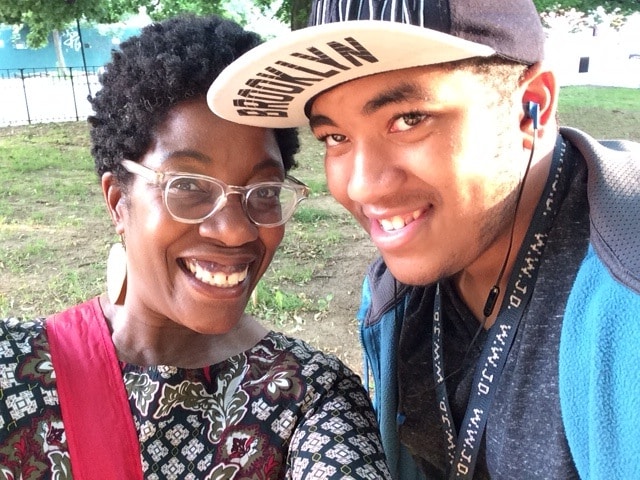(WOMENSENEWS)–In a huge victory for professional women bowlers, the final matches in the Women’s U.S. Open tournament–with the highest-ever purse of $300,000–will air Dec. 9 during 90 minutes of live coverage on ESPN. The cablecast will immediately follow airing of the comparable men’s matches in Fountain Valley, Calif.
“This is terrific news for women’s bowling and for our athletes,” said Carolyn Dorin-Ballard, president of the Professional Women’s Bowling Association Players’ Association.
The cablecast and prize are the results of a recent settlement between the Professional Women’s Bowling Association and the Bowling Proprietors’ Association of America that gave the Open’s lucrative licensing rights to the women’s league this year for the first time.
The proprietors’ association is the owner of the U.S. Open, the sport’s most prestigious national championship and the only tournament in which both women and men compete.
“We’ve gained the rights to license and package one of our Triple Crown events and now we can build that into a centerpiece event for all women bowlers,” said Dorin-Ballard, the top-ranked bowler on the women’s tour. “I know that there are many talented athletes in our sport who are going to jump at the chance to compete in the event this year.” The new host and sponsor of the women’s tournament is the Riverside Resort in Laughlin, Nevada.
The women’s victory was hard won.
Trouble Began With End of Equal Prize Money, Air Time
Back in June, the owners informed the women’s league that female bowlers would compete in the Open for almost half as much money as male bowlers. In addition, the Open cablecast would not be split evenly between the men’s and women’s events, but instead would be devoted entirely to the men. For the previous three years, owners had offered equal time and equal purses for both leagues.
“That really pushed the women bowlers over the edge,” said Jan Schmidt, director of marketing for the league.
That equity at the Open unraveled when its major sponsor, AMF Bowling, a Richmond, Virginia-based company that is the largest owner of bowling centers in the world, was threatened with bankruptcy and pulled out of the event. (AMF Bowling filed for bankruptcy in July 2001.) Without AMF’s sponsorship, the proprietors were in danger of losing money on the Open.
At the same time, the men’s Professional Bowling Association, recently acquired by three former Microsoft executives, was flush with cash. In what many consider an unfortunate move, the owners voted to license the rights of the men’s tournament to the men’s league and give it control of the Open cablecast.
Despite protests from female bowlers, Jack Kelly, the chief executive officer of the proprietors’ association, said at the time that it was a financial deal the owners couldn’t refuse.
“We were still paying the women three times as much as they get in other tournaments, which is not exactly mistreating them,” he said then.
But Dorin-Ballard pointed out that men typically bowl for three times more money than women. She said the salaries female bowlers earn as industry pro-staff are “not in the same ballpark” as the men’s.
The U.S. Open had represented the only equal opportunity in bowling.
“There was equity and then it was being taken away,” said Donna Lopiano, executive director of the Women’s Sports Foundation. “[The proprietors] could have made a decision that stood on principle for equal opportunity and entered into no deal that would take them away from that.”
Women Bowlers Sign Pledges for Equity
In July, 49 women – including the top 20 bowlers – adopted an equity principle and pledged not to participate in the proprietors’ tournament unless they were offered the same purse and television coverage as the men, despite the fact that the original $187,500 prize fund was still the largest on the women’s circuit.
“They so desperately needed to bowl for that prize money,” said marketing director Schmidt. To take a stand says a lot for their character and what they’re trying to do for women.”
Ultimately, over 90 of the 140 women’s league members planning to compete in the Open, as well as several amateurs, decided they would boycott the event.
“We had a majority of women sticking together and fighting in unity for one cause,” said Dorin-Ballard. “When I saw that, I knew we could really do something here.”
The women bowlers credited negative publicity and their firm stance with forcing the proprietors back to the negotiating table, where they also pledged to contribute to the women’s purse.
“It was good judgment on the part of the proprietors to make sure they would work it out,” said Lopiano, from the Women’s Sports Foundation.
Schmidt applauded the licensing agreement with sport’s best-known cable channel.
“It’s great to have a broadcast partner like ESPN that recognizes the importance of women’s sports and is willing to give the women’s U.S. Open the same high-quality airtime that they have provided for the men’s U.S. Open,” Schmidt said.
The president of the women’s league, John Falzone, said the arrangement heralded a new era in women’s athletics.
“It proves that women’s equity in sports can happen,” he said.
Dorin-Ballard agreed, saying the new women’s U.S. Open was a victory that she hoped would inspire future competitors.
“I hope that young women bowlers after me, who are now in college and high school, see what it’s all about. It’s not just going out there and being a great bowler,” Dorin-Ballard said. “You have to stick up for what you feel is right.”
Content editor Siobhan Benet contributed to this story. Megan Costello is a free-lance writer in New York
For further information visit:
Professional Women’s Bowling Association:
http://www.pwba.com
Bowling Proprietors’ Association of America
http://www.bpaa.com
Professional Men’s Bowling Association
http://www.pba.com


